In the realm of evergreen trees, the distinction between spruces, pines, firs, and Douglas firs may seem elusive, as they share the timeless allure of coniferous beauty. However, subtle differences in needle arrangements, textures, and cone characteristics provide valuable clues to unveil the identity of these majestic trees on your property.
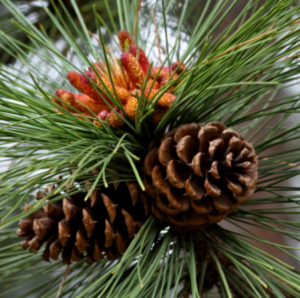
Pine trees are characterized by needle clusters ranging from 2 to 5, depending on the species. Notably, pines never exhibit singular needles. Distinguishing them further, pines boast canopies with less dense needle coverage compared to firs and spruces. Examining their cones reveals a sturdier and more woody texture compared to their coniferous counterparts.
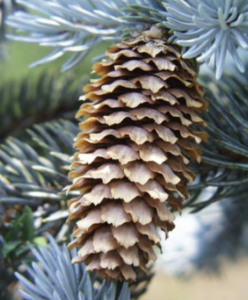
Spruces stand out with needles that emerge individually from the branch, presenting a singular, squared appearance. Run your fingers along spruce needles, and you’ll notice their sharp points. Additionally, the needles of spruces can be easily rolled between your fingers, enhancing their distinct texture. When observing their cones, spruces exhibit a softer feel and thinner scales, giving them a more flexible and bendable nature.
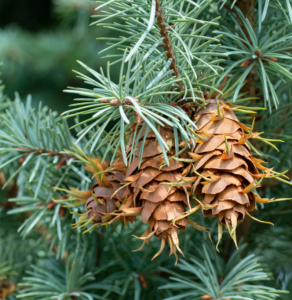
Both Douglas-fir and true fir trees share the characteristic of having singular needles extending from the branch. However, distinguishing between them involves the texture of the needles. Fir needles are flat and lack the rigidity found in spruce needles. Unlike spruces, fir needles are not easily rolled between your fingers, offering a softer touch. When handling their cones, firs display a similar flexibility, featuring softer scales that set them apart from the sturdier cones of pines. Fir cones also have a bract that sticks down between the scales which makes them distinctive.
Understanding these nuanced differences in coniferous trees becomes not only an aesthetic pursuit but also a practical skill. Identifying these evergreens proves valuable when planning landscape designs or seeking arborist advice on potential pests and diseases that may impact them. With this knowledge, you can embark on a journey of appreciating and caring for the diverse tapestry of evergreen wonders that grace your surroundings.
Hardwood and softwood, while terms often associated with the density of wood, actually refer to two distinct types of trees. Hardwoods come from deciduous trees that shed their leaves annually, such as oak, maple, and cherry. Softwoods, on the other hand, are derived from coniferous, evergreen trees like pine, spruce, and cedar. The distinction between the two lies in the structure of the trees and the types of seeds they produce rather than the hardness of the wood.
Hardwoods are known for their dense and durable composition, making them well-suited for a variety of applications. Commonly used in furniture construction, hardwoods contribute to pieces with a timeless and sturdy quality. Oak, for instance, is prized for its strength and beautiful grain patterns. Maple is favored for its light color and fine texture, often used in cabinets and flooring. In contrast, softwoods, with their more porous and lightweight characteristics, find extensive use in construction, particularly for framing, decking, and various outdoor applications. Softwood lumber is often employed in building structures due to its affordability and versatility.
While both hardwoods and softwoods serve diverse purposes, understanding their unique properties allows for informed decision-making in selecting the right type of wood for a specific project. Whether crafting fine furniture with hardwoods or constructing outdoor structures with softwoods, each type brings its own set of advantages and aesthetic qualities to the world of woodworking and construction.
When it comes to firewood, the distinction between hardwoods and softwoods is crucial. Softwoods ignite more quickly, making them excellent for use as fire starters. On the other hand, hardwoods burn at a slower and more sustained pace, making them the ideal choice for adding to the fireplace before retiring for the night. The difference in burn rates between these two types of wood allows for strategic use based on specific needs, whether it’s for quickly establishing a warm fire or ensuring a longer-lasting source of heat.
*Important note: If stacking large amounts of firewood outside, only kiln dried firewood will prevent the spread of EAB Emerald ash borer to near by ash trees.
Being able to identify these different trees can be useful in planning for planting a new tree in your landscape or when consulting an arborist about certain pests and diseases that may affect them.
Are you interested in Planting Trees near your home? Splintered Forest Arborists can help determine the best trees to plant on your property with a Plant Health Care assessment of your land. Contact Splintered Forest Plant Health Care today to set up a free estimate for Tree Planting.
Sources:
https://www.extension.iastate.edu/news/2005/nov/061401.htm
https://ohioline.osu.edu/factsheet/anr-80
Ash trees are a popular native tree species in the United States and are often planted as street or landscape trees. Ash trees are part of the Fraxinus genus and there are various species of ash trees in Colorado, including green ash and white ash. It is common to confuse an Ash tree with various other trees that look similar, such as black walnut, maple, boxelder, hickory, or dogwood trees. To correctly identify ash trees, you will need to closely examine various parts of the tree.
To start identifying an ash tree, you can look at its branches. You can either pick up a dead stick that has fallen to the ground or pull down a branch so you can get a close look at it. Check to see if the branches have opposite branching. This means that when branches grow from the main branch, they all start at the same position. Other trees feature alternate branching, with branches growing from the main branch alternating left and right. For example, maple, dogwood, and boxelder trees have opposite branching, while oak, cottonwood, and hickory trees have alternating branches. You can also look for fresh branch buds. On ash trees, the buds will be directly across from or opposite each other.
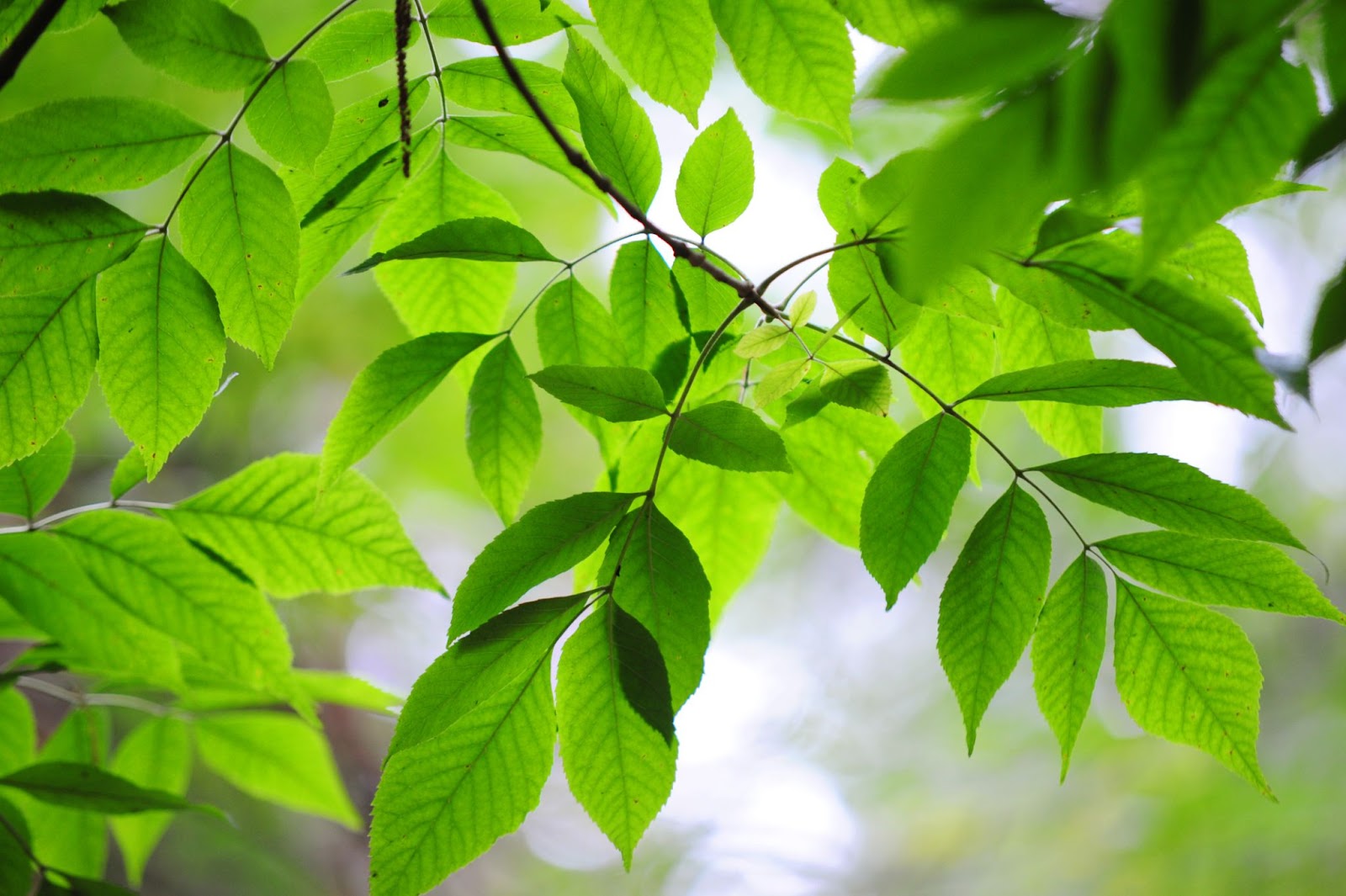
https://splinteredforesttreeservices.com/useful-tree-service-resources/
Another way to confirm that you have an ash tree is to look at its leaves. The leaf structure of an ash tree is compound rather than single. From this point you can count the number of leaves. You will either see a single leaf or 5 to 7 (some varieties have up to 11) smaller leaflets that branch out from it. A single leaf tree, such as a maple tree, has one big leaf that extends from the branch. Both ash trees and boxelder trees have compound leaves, so be careful with getting them confused. Another characteristic of ash tree leaves is that they have either smooth or finely toothed edges.
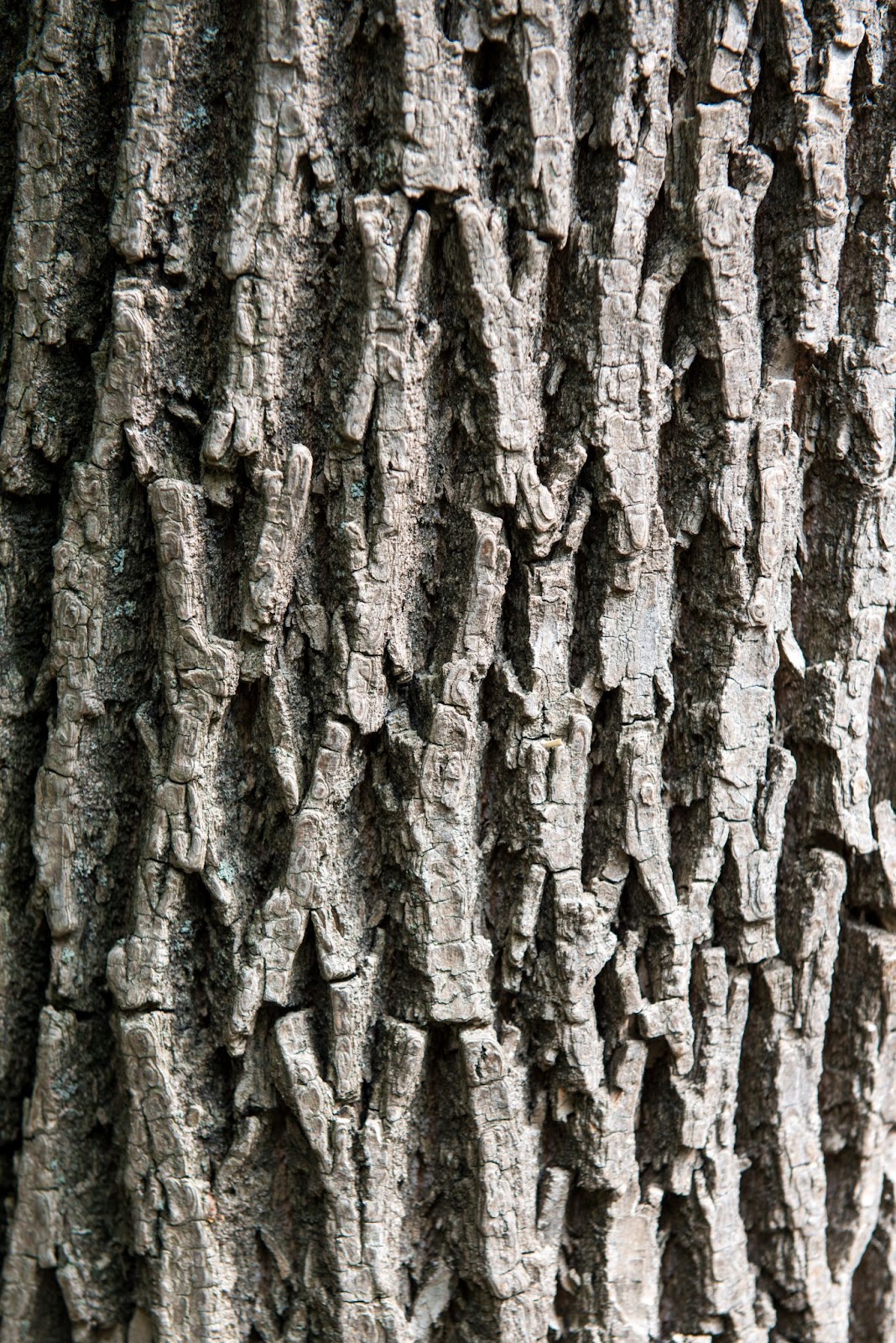
If you are looking at a mature ash tree, the bark can help with identification, too. Ash trees will have a diamond-shaped bark pattern on both white ash and green ash trees. This helps differentiate them from maple trees. Young ash trees may not have this distinctive bark pattern, but you should be able to rely on other characteristics if this is the case.
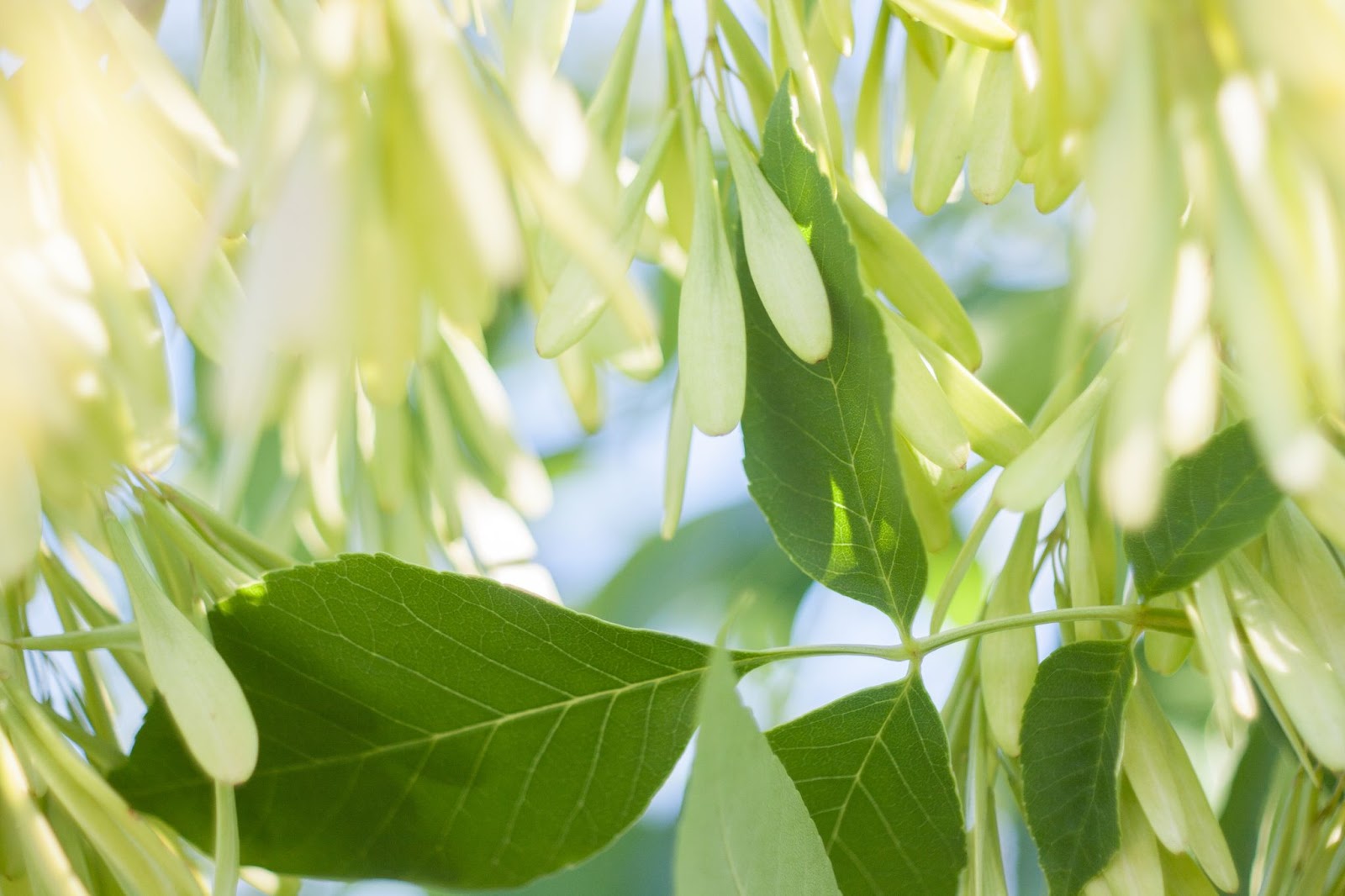
https://splinteredforesttreeservices.com/useful-tree-service-resources/
An ash tree will have either light green or brown clusters of seeds (known as a Samara). The seeds on an ash tree are paddle-shaped and resemble small leaves and dangle from the tree in big clusters. Don’t assume that a tree that lacks seeds isn’t an ash tree. Some ash trees are seedless. Only in late autumn and early winter can seed clusters develop. Boxelder/maple seeds are similarly clustered, although they resemble wings rather than paddles.
Knowing whether or not you have an ash tree on your property is important, especially in the state of Colorado. The Emerald Ash Borer (EAB) made its way to Colorado in 2013, and this pest has become a serious threat to ash trees. If you have an ash tree that has been infested with the Emerald Ash Borer, you will want to contact a professional to treat infected trees as soon as possible. EAB can be prevented, so if you live within 15 miles of a known EAB infestation, you may want to consider treating your ash trees.
If you’re having issues with your ash trees or any other type of tree on your property, Splintered Forest can help. Our crew includes ISA Certified Arborists, experienced tree climbers, and expert tree fellers. If you are seeing emerald ash borer signs of damage, contact us today to schedule your free, no obligation estimate.
When it comes to needing Denver tree services in the winter, we know that a snowstorm with lots of moisture can just as easily be followed by a weeks-long drought. It might look like your trees are hibernating—especially when they have no leaves—but did you know that tree roots still grow during the winter?
Whether you have new or established trees, you want to make sure they make it to the spring. The recommendations for watering trees in Colorado is different from many other parts of the country because of our unique semi-arid conditions. Even if it snows, trees don’t get much water from that—approximately a half-inch of water for every foot of snow.
When there are long dry periods during the Winter, plant root systems can become compromised. This can weaken the entire plant, making it more susceptible to insect infestations, or tree diseases.
Read on for what you need to do to keep your trees healthy through the winter months.
The general rule of thumb for new trees is that as long as there is snow in the winter, watering is probably not necessary. It’s more important be make sure your tree has plenty of water before the ground freezes. You probably won’t have to water them again until springtime.
There is an exception to this rule, however: If the winter is so mild the ground doesn’t freeze, your newly planted trees might need to be topped off with a bit more water. If your Evergreens start looking a bit brown, they might be thirsty—so go ahead and give them a drink. You might also water once or twice a month if there is a drought and temperatures are warm (above freezing).
As mentioned previously, if your Evergreens—regardless of age—are starting to get brown needles, you should probably water them. If they look green, they are probably just fine.
Keep an eye on your trees during extended dry periods where there is no snow cover; you may want to plan on watering once or twice a month. It might seem alike a hassle to drag out the garden house in the middle of winter, but if your trees don’t get enough moisture, they may be in bad shape next summer. Root damage can affect the entire plant, and you might be in for an unpleasant surprise come spring.
The CSU extension website has the following recommendations for fall and winter watering:
If you have questions about taking care of your trees this winter, contact the experts at Splintered Forest Tree Services in Denver or Evergreen. Call us today!
There are many reasons you may need to have a tree removed. At times, diseased or dying trees will need to be removed to ensure there is no damage to the house itself. Also, there are safety issues involved and otherwise perfect trees must be removed. If you must remove trees around your home, consider repurposing wood! You could use it in a variety of ways from furniture to shelving and keep elements of your once tall trees in your Denver home.
Transforming and repurposing old wood into a table is a fantastic way to add a custom style in your home. Depending on the style of your home, you can make or have a table made to fit. For farmhouse or traditional homes, consider a table made completely of wood. Create a long wooden table paired with a gorgeous color stain that helps it fit with other colors in the room. For modern or contemporary homes, consider a wood top with a metal or pipe bottom and legs. This unique style will stand out and provide flair to your home. Pair it with a pair of custom made wooden chairs. In addition to chairs, consider making wooden stools of your repurposed wood, or add a bench on one side of your table. Have a large backyard? Consider adding a picnic table or chairs made from your old tree’s wood!
Can you ever have enough storage space? Repurposing wood as a cabinet or shelf is a great addition to your home! Plus, you will have complete control and can build or have something build perfectly for an area. For instance, choose a corner cabinet to store dishes, essentials, supplies and more. Once it is built, you can add a stain to it, or paint it a color that matches other elements of the room. Next, wood shelving is a very durable option. From thick to thin shelves, you can really have fun and play with some great ideas that look great in any room. You can also put wood shelves on a grid system or using metal or steel pieces to mount them on the wall.
Use your reclaimed wood to transform your bedroom. Many love the way a wooden structure looks. However, that is not your only option! You can complement your current bedroom arrangement with a wooden headboard. There are so many options to customize a headboard. The wood can also be great to customize nightstands that are connected to your bed or stand-alone. Wood can also create a gorgeous vanity or dresser for essentials or a way to help you get ready in the morning.
Need some inspiration? Check out Country Living’s 22 Easy DIY Reclaimed Wood Projects for Your Home.
If you suspect that you have trees that need to be removed, Splintered Forest can help! Let our crew create a safe and aesthetically pleasing area around your home – we can even remove trees right next to your home or a structure! Look through our tree trimming and removal photo gallery and give us a call at 303-819-9840 for a free estimate.